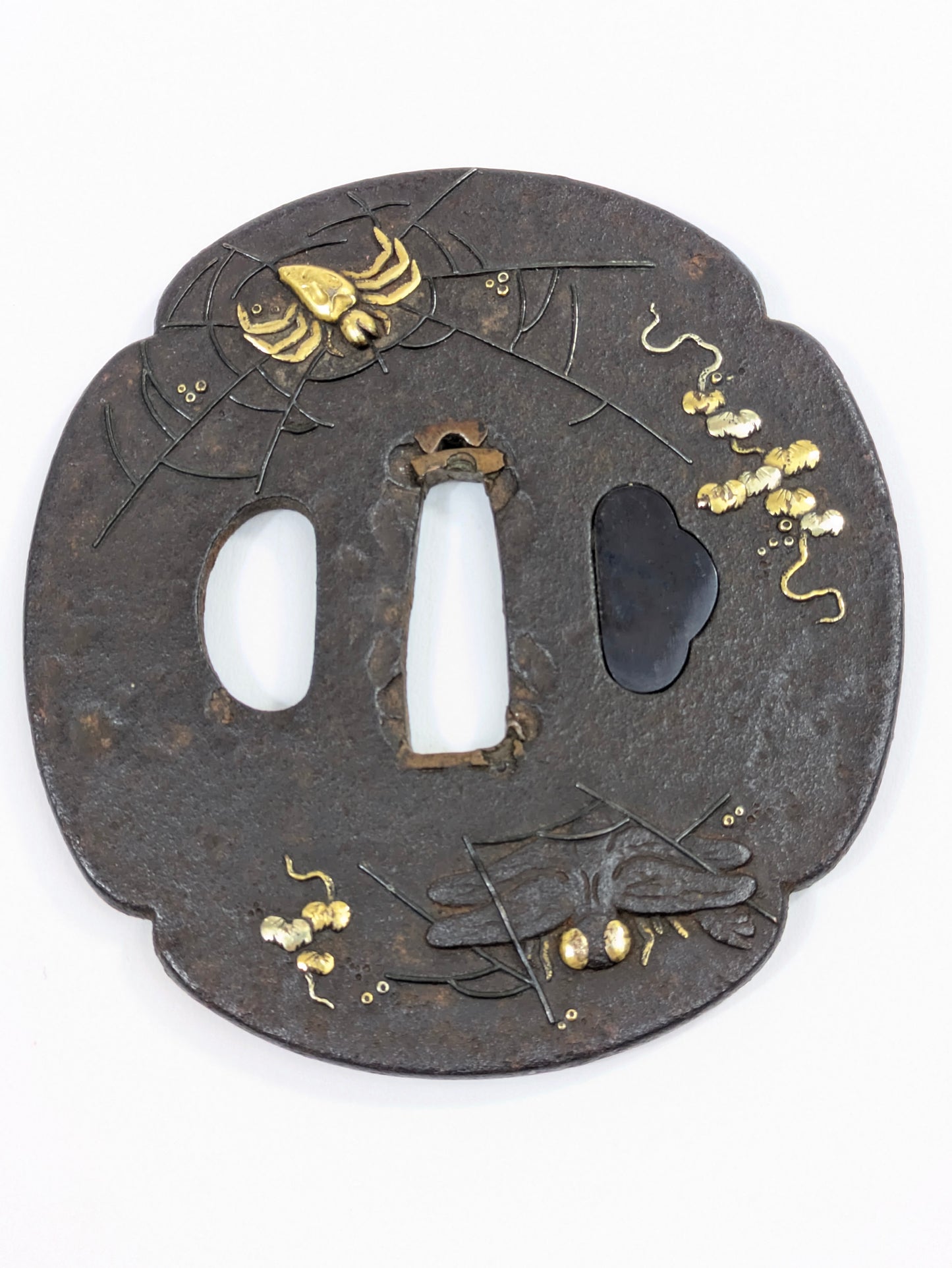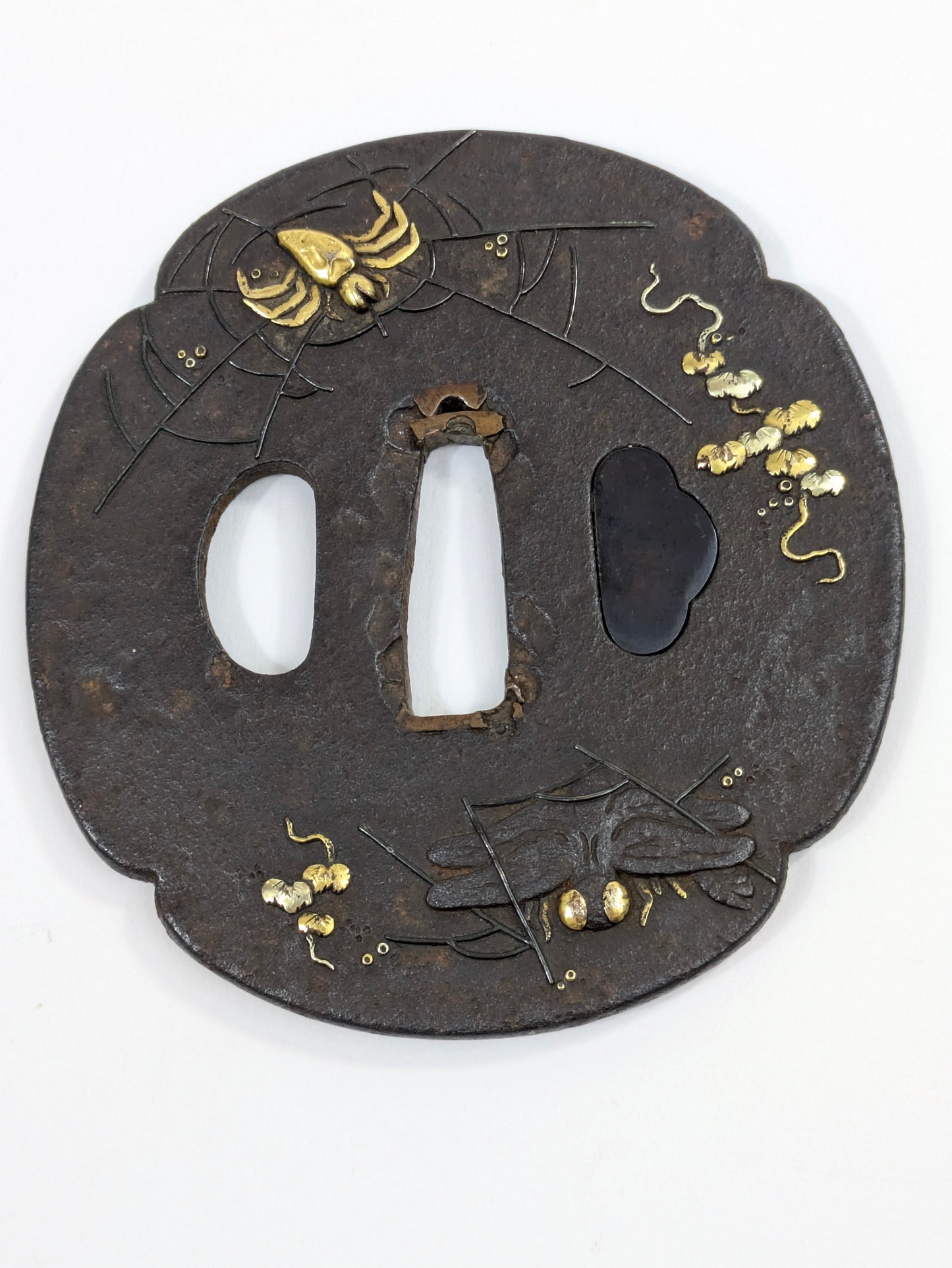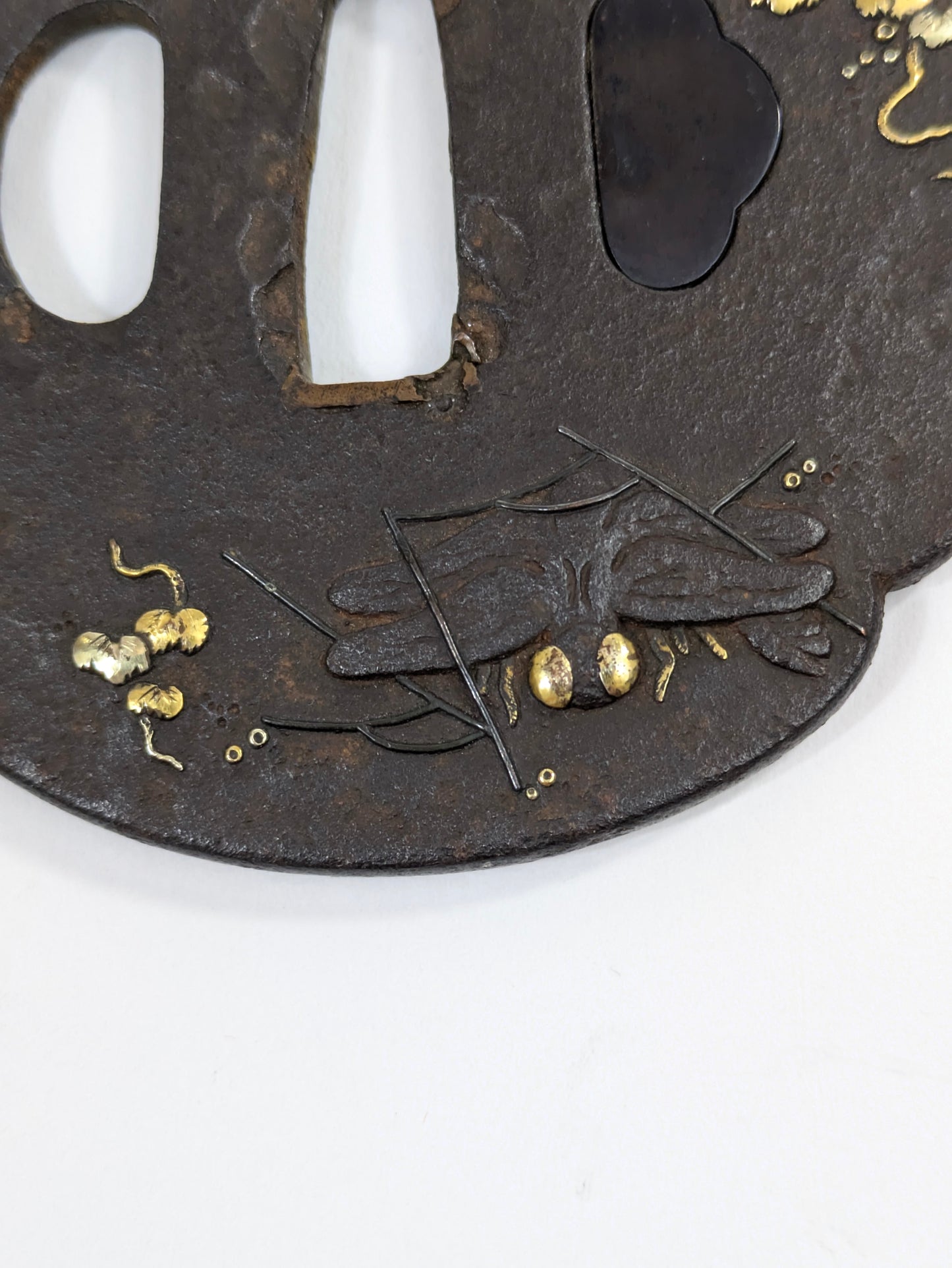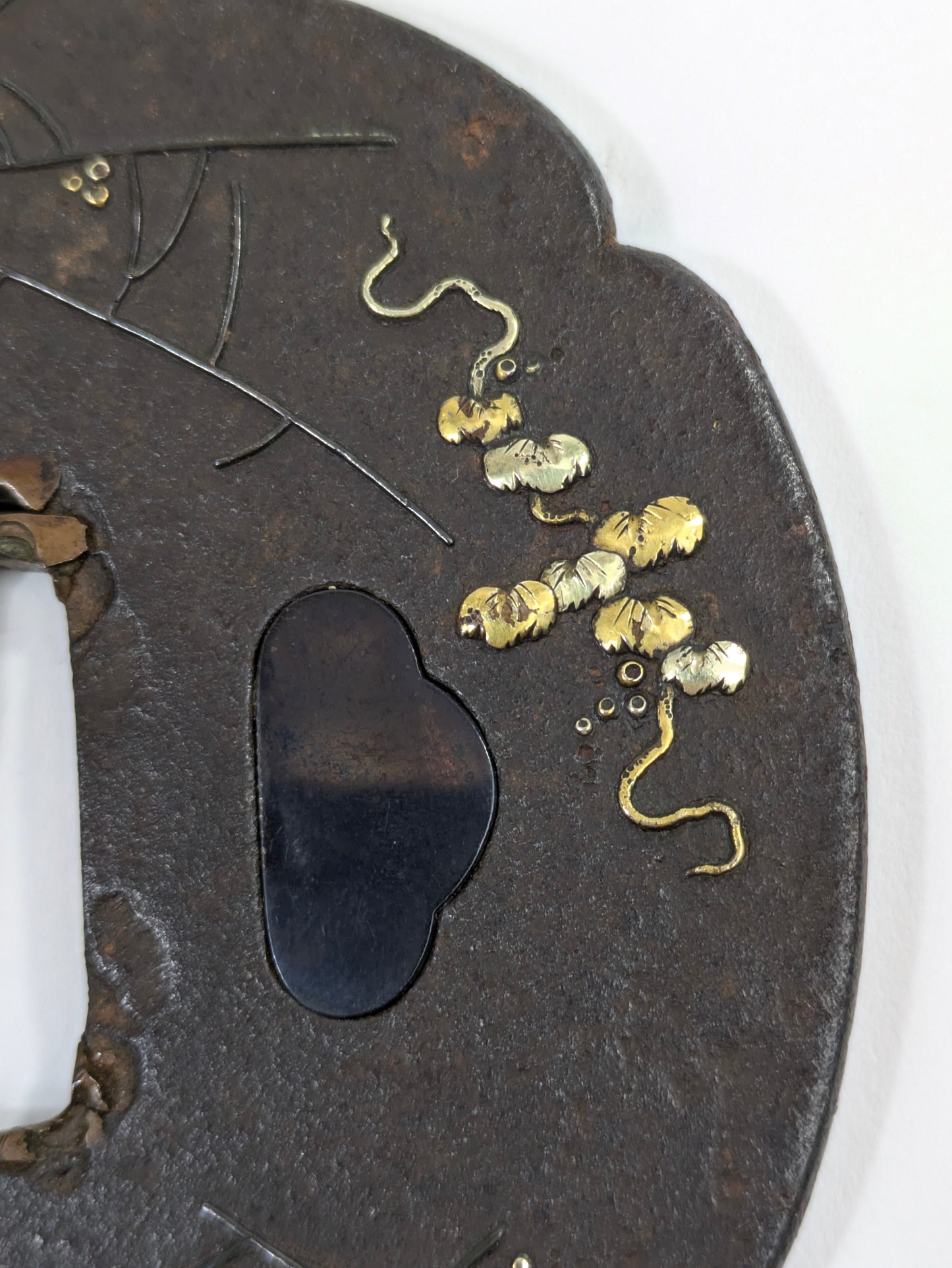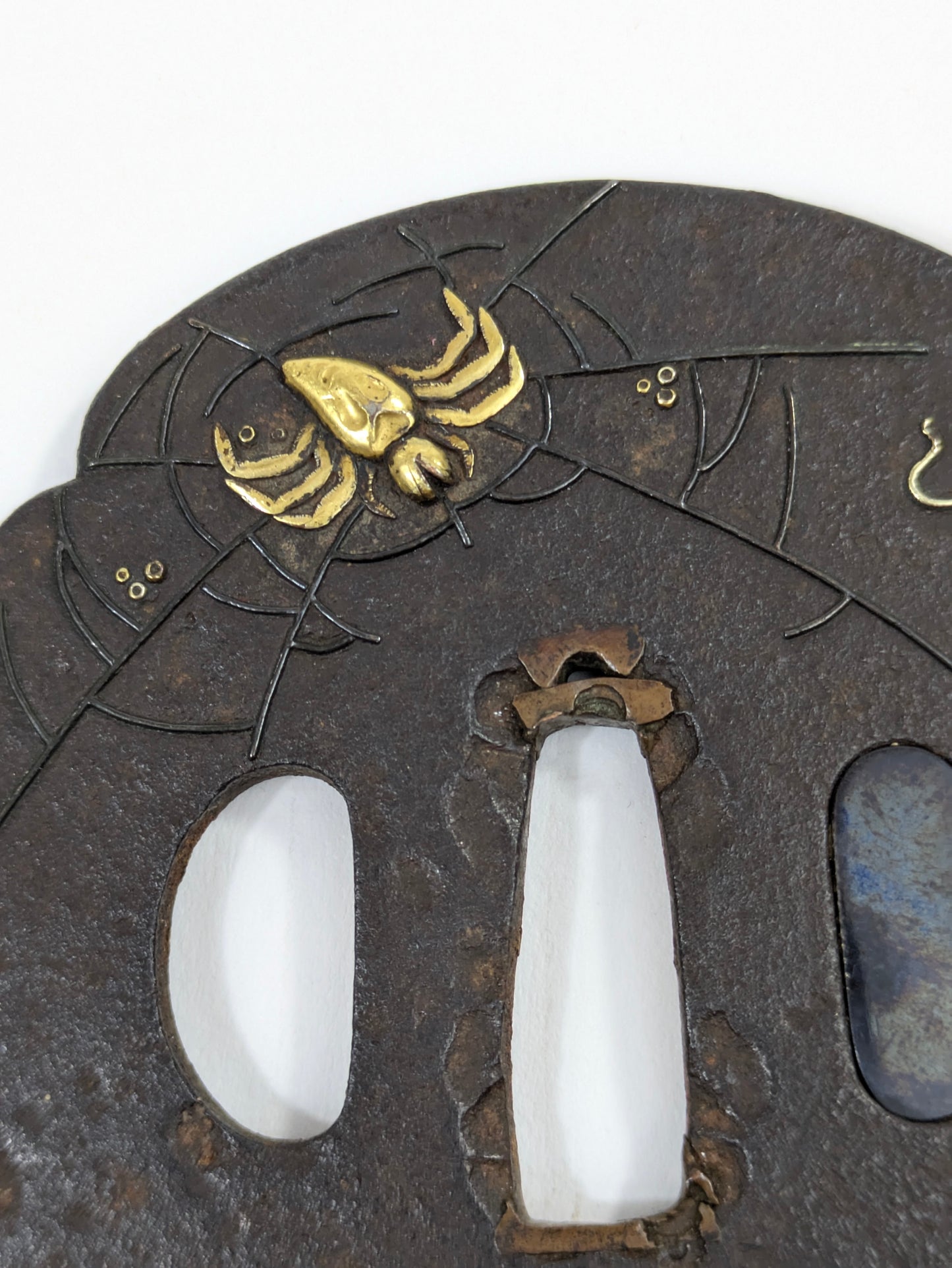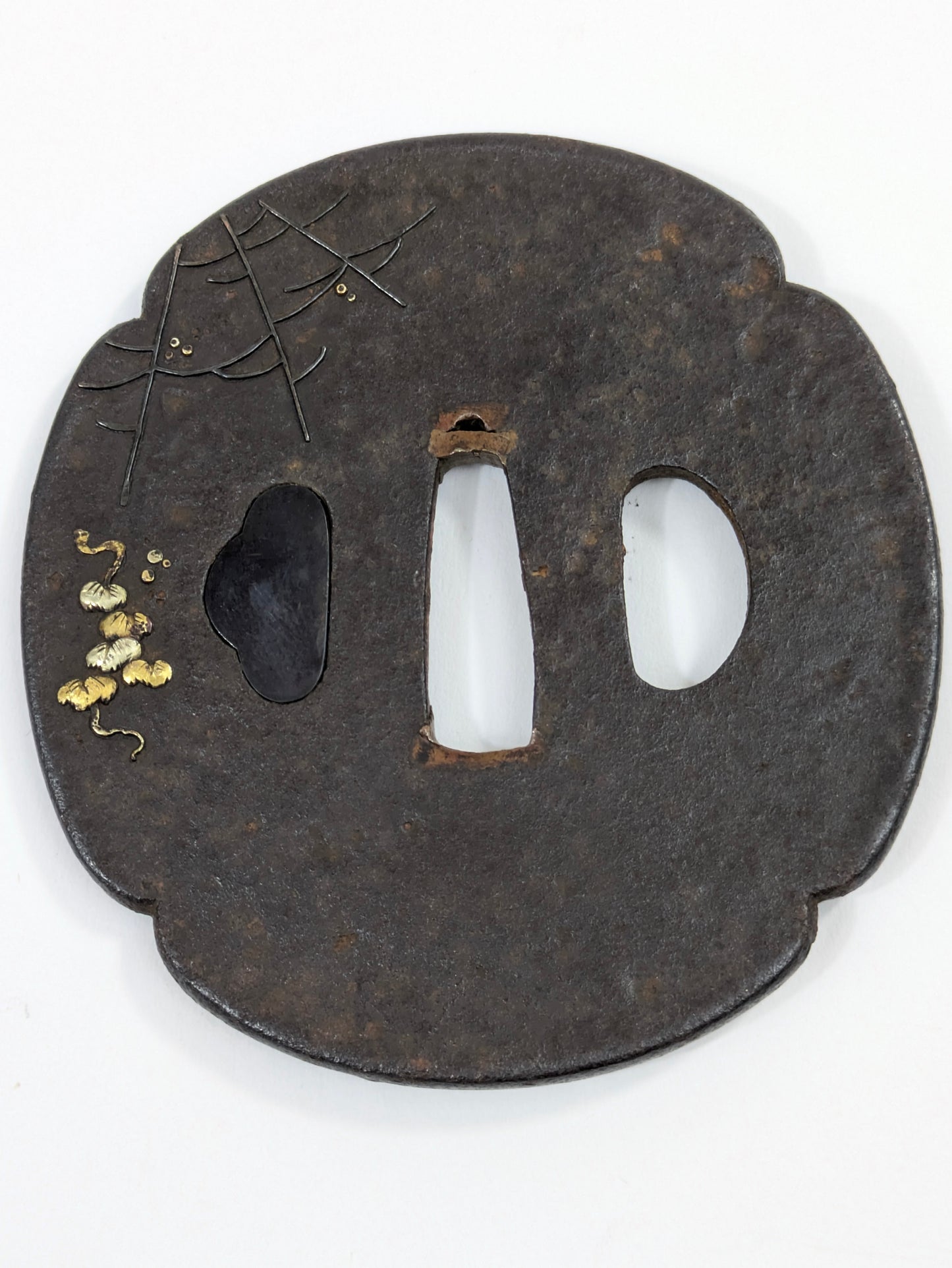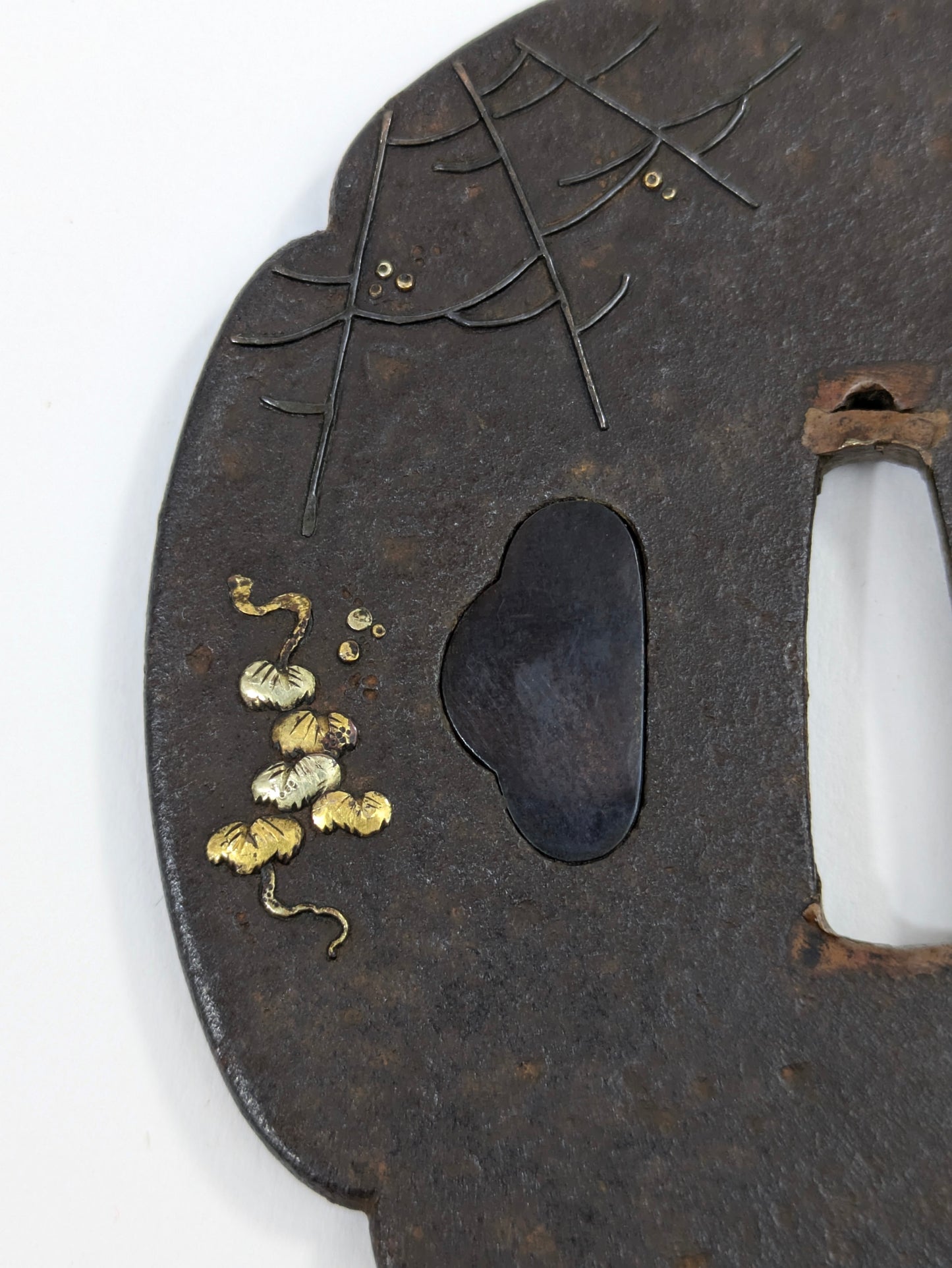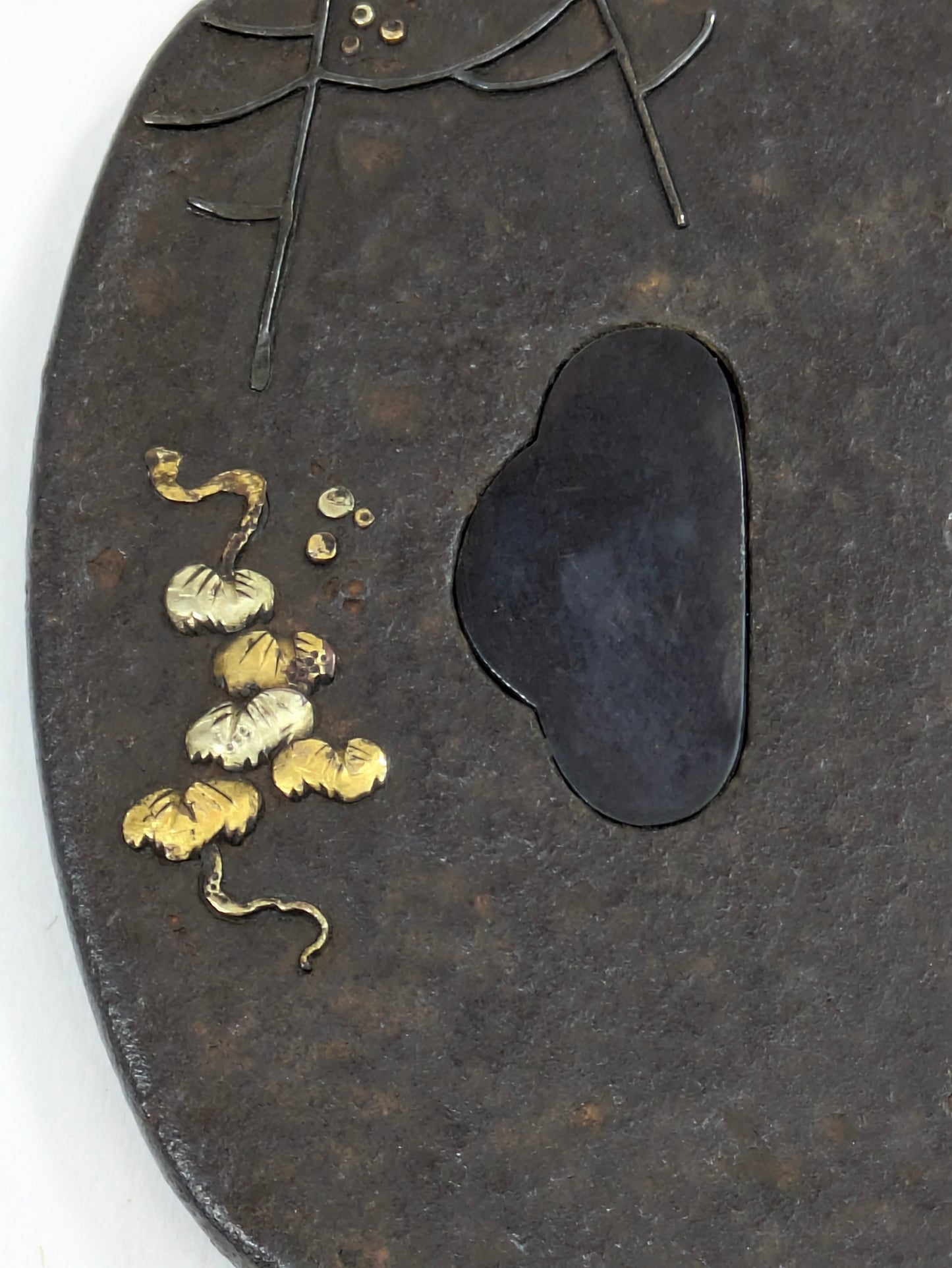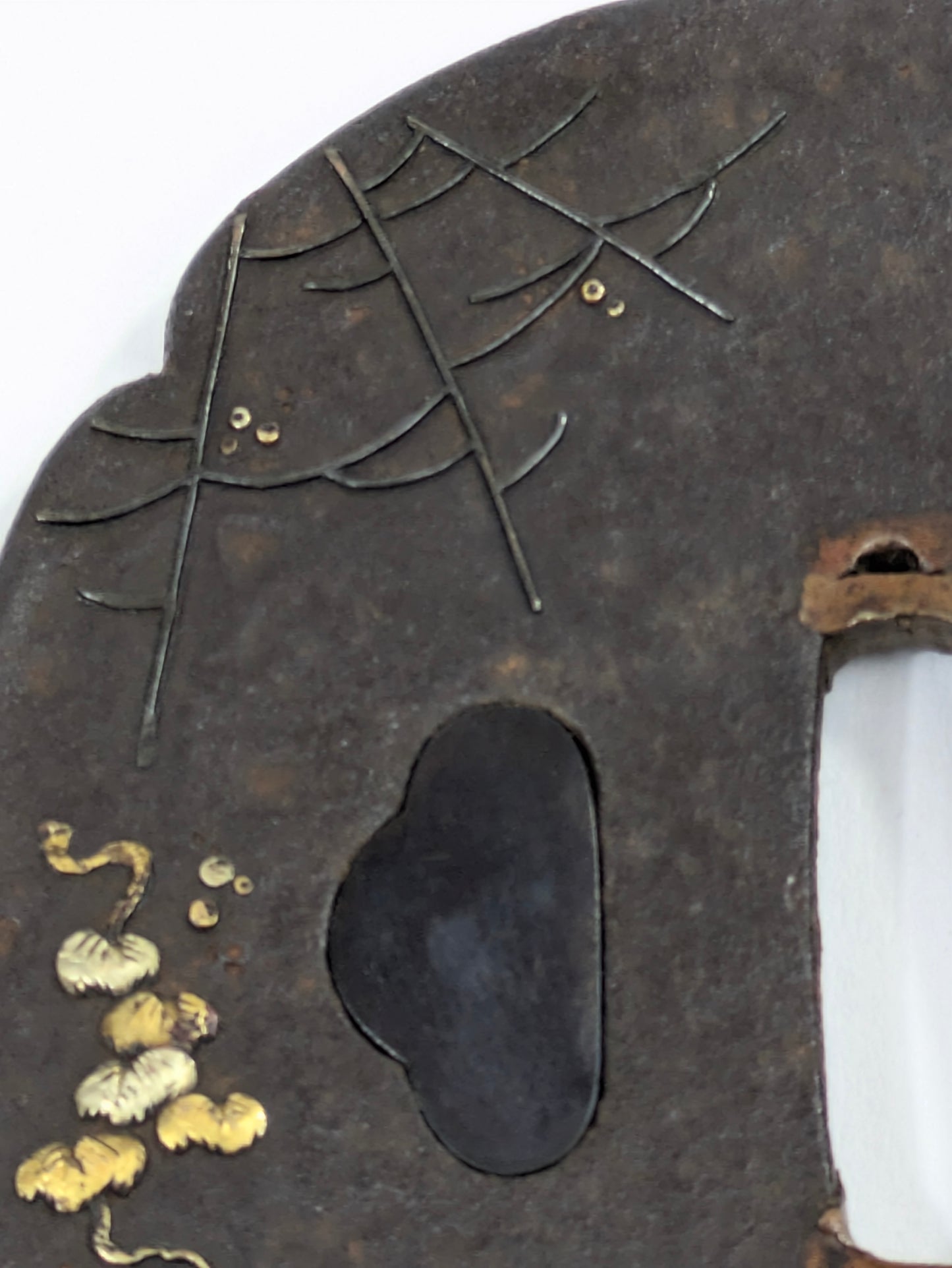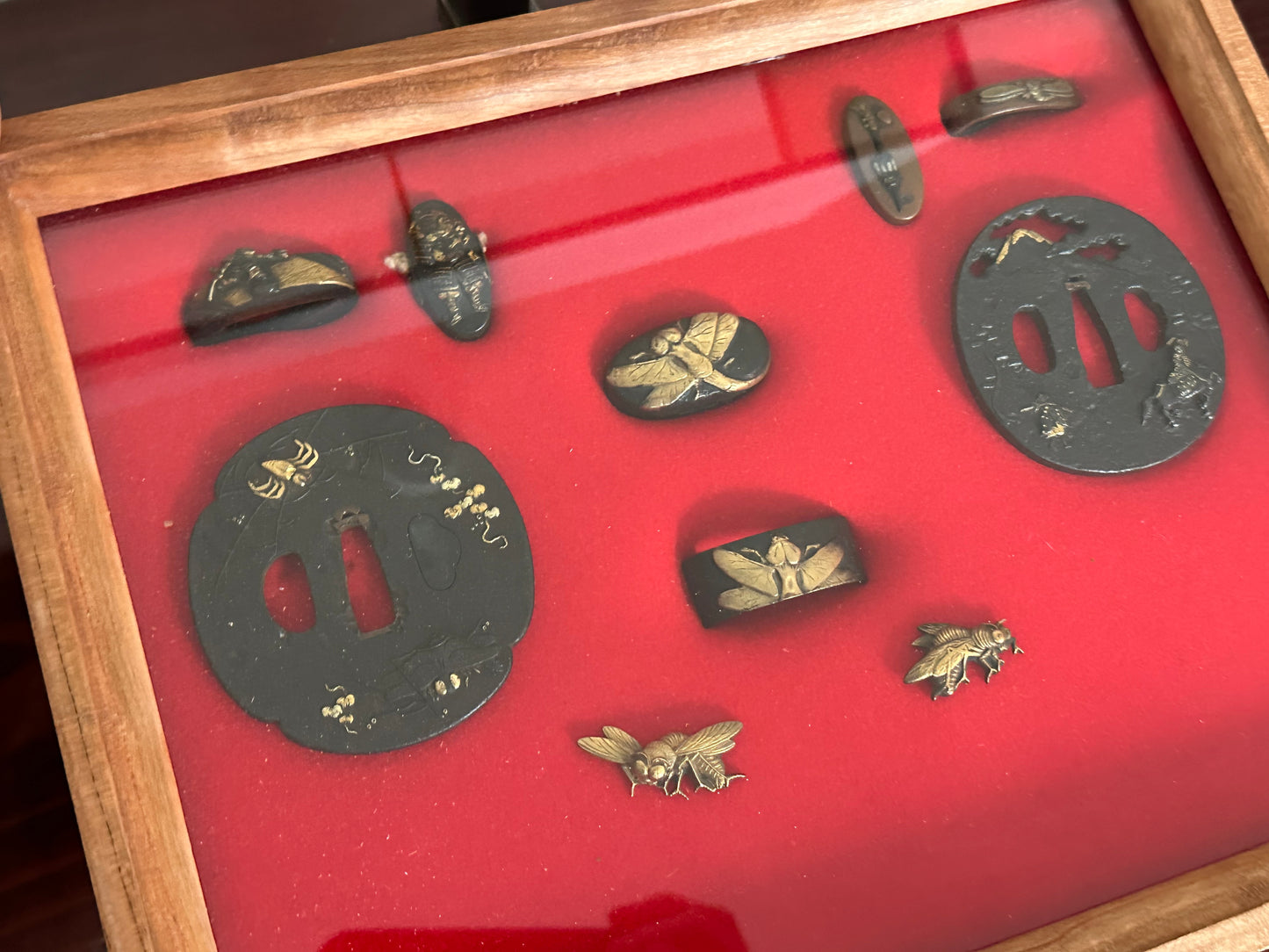Antique Japanese Iron Tsuba – Spider, Dragonfly, and Ivy – Edo Period Samurai Sword Guard
Antique Japanese Iron Tsuba – Spider, Dragonfly, and Ivy – Edo Period Samurai Sword Guard
Couldn't load pickup availability
An evocative Edo period (18th–19th century) Japanese iron tsuba, decorated in fine takazōgan (high relief inlay) of gold and shakudō. The design shows a spider weaving its web among ivy vines, with a dragonfly hovering nearby. The reverse continues the web motif with scattered leaves and small insects in gold inlay.
The spider and dragonfly motif is a poetic and deeply symbolic one in Japanese art. The dragonfly, known as tonbo (蜻蛉), represents courage and forward motion — a traditional emblem of the samurai — while the spider, patient and still, evokes watchfulness and fate. Their meeting reflects the Buddhist sense of impermanence (mujō), a reminder of beauty and danger intertwined. The ivy (tsuta), known for its clinging growth, symbolizes endurance and steadfastness, balancing the theme.
The tsuba’s mokko-gata (four-lobed) form and fine inlay workmanship suggest a refined Edo workshop, likely from the late 18th century. The plate shows a rich, natural patina and gentle wear consistent with age and handling.
Material: Iron with gold and shakudō inlay
Technique: Takazōgan (high inlay), sukidashi-bori (low relief carving)
Motif: Spider, web, dragonfly, ivy
Shape: Mokko-gata (four-lobed)
Era: Edo period (18th–19th century)
Condition: Very good antique condition with light wear and natural patina
Cultural Context
In Edo-period sword fittings, insects and plants were often paired to express seasonal beauty and the samurai’s awareness of life’s fragility. The spider’s web and the fleeting dragonfly are classical imagery for autumn — a season of both reflection and quiet power.
Japanese tsuba, Edo period, samurai sword guard, tonbo, spider, tsuta, shakudo, takazogan, menuki, Japanese sword fitting
